Aluminized Steel

Aluminized steels are steels that have been hot-dip coated with pure aluminum or aluminum-silicon alloys. This hot-dip coating process is termed hot-dip aluminizing (HAD)...
Please fill out the following form to submit a Request for Quote to any of the following companies listed on
This article takes an in-depth look at steel service centers.
Read further and learn more about topics such as:

Steel service centers are entities that source steel directly from mills and producers, distributing these materials to an array of clients. They fulfill a pivotal function in the steel supply chain by acting as intermediaries connecting steel manufacturers with end consumers. By partnering with these centers, clients can devote more attention to their core operations. The clientele includes a wide spectrum, from large corporations to small businesses, covering sectors like automotive, electronics, HVAC, transportation, construction, and home appliances.

These centers are responsible for acquiring bulk steel from mills, managing the steel inventory, and providing customized steel products tailored to meet their customers' specific needs. The steel service centers can also alter the steel into particular forms, dimensions, and shapes as necessary. Contracts between the service centers and their clients specify the volume and schedule for steel product deliveries. Clients then apply these products based on their particular requirements.
Here are some benefits of working with a steel service center:
Clients of steel service centers benefit from cost savings due to the following advantages:
Steel service centers have established relationships with mills that provide high-quality bulk steel at competitive prices. They possess expertise in quality assurance aspects, including inspection, testing, and certification, ensuring that customers receive reliable products. Reputable steel service centers often hold prestigious certifications such as ISO 9001 and IATF 16949, which confirm their ability to meet customer specifications and comply with relevant statutory and regulatory standards.

Working with a steel service center can streamline vendor management. These centers provide a broad selection of steel products tailored to customer needs, allowing customers to obtain various types of steel from a single source. This arrangement saves time and effort by eliminating the need to manage multiple suppliers, handle negotiations, arrange deliveries, and maintain numerous supplier relationships.
Steel service centers purchase a diverse range of steel components based on anticipated demand and keep them in inventory. Once customers place orders, these parts are quickly dispatched from the warehouse. This approach reduces lead times, as it is less reliant on the production schedules of steel mills, ensuring faster delivery and helping customers maintain their production timelines.
Steel service centers support numerous businesses by allowing customers to concentrate on their core competencies. By leveraging the services of a steel service center, companies can redirect resources to more critical aspects of their operations.
Steel service centers typically offer the following types of steel alloys:
Stainless steel contains 10.5-30% chromium, along with nickel, molybdenum, and other elements. Its corrosion resistance is due to chromium, which forms a protective oxide film on the surface. This film prevents further oxidation and protects the metal underneath. Stainless steel is also known for its high strength, ductility, wear resistance, and toughness. It is resistant to chemicals and can endure high temperatures and pressures.

Steel service centers provide a range of stainless steel grades. The two most prevalent grades are:
Grade 304 is one of the most widely used austenitic stainless steel grades. It contains 8% to 10.5% nickel and 16% to 24% chromium. The most common variant is 18/8 stainless steel, which has 18% chromium and 8% nickel. This grade offers high ductility, making it suitable for forming, machining, and deep drawing, and it requires annealing after cold working. It provides good resistance to corrosion and chemicals across a broad temperature range. However, it can suffer from pitting corrosion in chloride or saline environments. Grade 304 is commonly used in kitchenware, sinks, pots, pans, fasteners (such as bolts, nuts, and screws), springs, pipes, and architectural paneling, and it is especially prevalent in equipment for handling food, beverages, and pharmaceuticals.
Grade 316 is an austenitic stainless steel, ranked just behind Grade 304 in popularity. It contains a higher amount of molybdenum compared to Grade 304, which enhances its resistance to corrosion and chemicals. This makes Grade 316 well-suited for harsh environments, including saline and industrial settings, due to its superior resistance to pitting and crevice corrosion. It also boasts good machinability and formability. Typical applications for Grade 316 include medical devices, surgical instruments, pressure vessels, heat exchangers, chemical reactors, fasteners, marine equipment, as well as food and pharmaceutical processing equipment. It is also used in kitchenware and piping systems.
Carbon steel, also known as plain-carbon steel, is an alloy consisting of 0.05-2.1% carbon. It often includes small amounts of other elements like manganese, chromium, and silicon. Increasing the carbon content enhances the strength and hardness of the steel, but also makes it more challenging to shape or machine. Compared to stainless steel, carbon steel has lower chromium levels, which makes it more prone to rust and corrosion. Despite this, it is generally more cost-effective than stainless steel. Carbon steel alloys are typically classified based on their carbon content:

High strength steels, also known as high strength low alloy (HSLA) steels, are a subset of low alloy steels with a carbon content of up to 0.2%. These steels have restricted levels of additional elements: nickel, chromium, molybdenum, and copper are collectively limited to 1.5%, manganese to 1-2%, and silicon to 0.5%. Due to their low carbon content, HSLA steels offer superior tensile and yield strength, along with excellent ductility, machinability, formability, and weldability. They are also lighter than conventional steel alloys. Applications for high-strength steels include structural components, heavy machinery, and pressure vessels, among others.

Spring steels are characterized by their medium to high carbon content, ranging from 0.5% to 1.0%, and may include silicon, manganese, magnesium, chromium, vanadium, and other alloying elements. Silicon is a primary alloying component in spring steels. These steels are designed to exhibit high yield strength due to their specific alloying and heat treatment processes, including hardening and cold rolling. They are capable of withstanding considerable twisting, bending, compressive, and tensile forces without permanent deformation. Spring steels maintain their shape up to their elastic limit and exhibit excellent fatigue resistance. They are also amenable to forming, shaping, and subsequent heat treatment. Common applications include the production of saw blades, antennas, scrapers, lock pins, washers, clips, helical springs, tape measures, and components for vehicle suspension systems.

Tool steels are steel alloys that are well-suited to function as a tool (e.g., cutting tool, die, hand tool, knife, blade). They are characterized by their high hardness, wear resistance, abrasion resistance, strength, and toughness. These properties do not lose at elevated temperatures. Tool steels contain 0.7% to 1.5% carbon and carbide-forming elements such as tungsten, vanadium, chromium, and molybdenum. They are heat-treated to improve their valuable mechanical properties and enhance their performance during shearing, cutting, forming, and stamping. There are six classes of tool steel grades:

Steel service centers offer a range of steel products to their clients, including the following:
Aluminized steel is carbon steel coated with aluminum-silicon alloy by hot dipping process. This process creates a tight metallurgical bond between carbon steel and its coating. It gives the workpiece a combination of the best properties possessed by carbon steel and aluminum alone. Aluminized steel has the strength of carbon steel and the corrosion resistance of aluminum. Moreover, it can withstand higher temperatures (up to 9000°F) than galvanized steel. It has a relatively lower coefficient of thermal expansion than stainless steel, which means it is less likely to deform at elevated temperatures. It also has good formability and machinability.
Aluminized steel comes in two distinct varieties:

Galvanized steel is a steel part coated with a protective, thin layer of zinc film through a galvanization or electroplating process. The most common coating method is hot-dip galvanization. The zinc film protects the steel base metal from corrosion, rusting, and acid attacks. Galvanized steel is more durable and has a longer service life than non-galvanized steel. However, prolonged exposure to salt water can corrode the galvanized steel. The zinc coating can wear away from the steel surface over time or by abrasion.
Galvanized steel is a cost-effective alternative to stainless steel and is widely utilized in the production of fasteners, HVAC systems, pipes, tubing, construction materials, metal roofing, and various other applications.
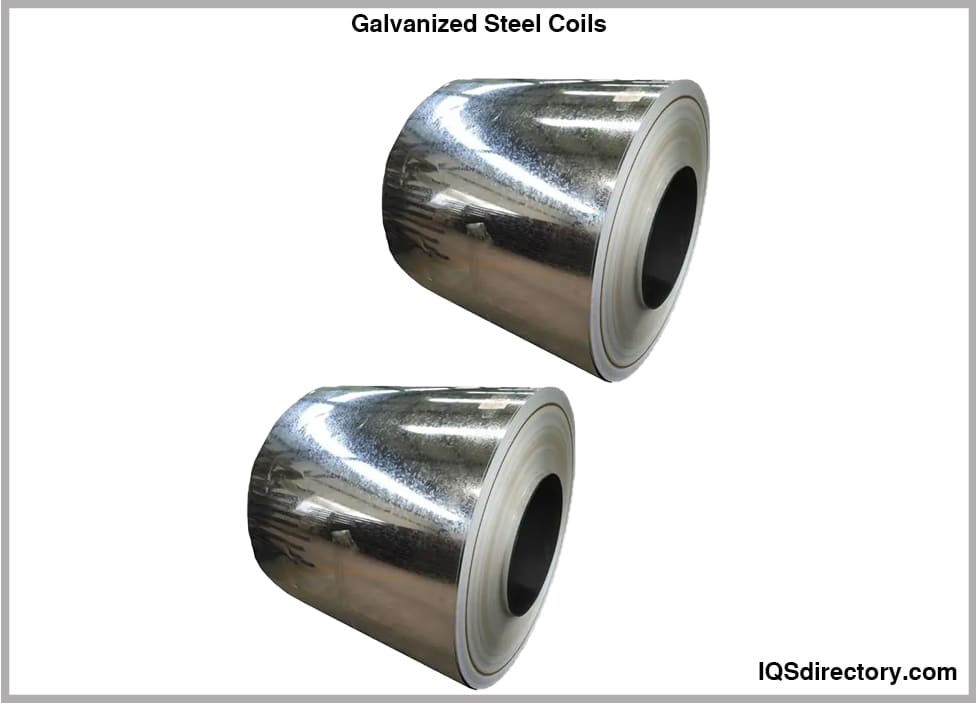
Hot-rolled steel refers to steel that is processed at elevated temperatures, generally exceeding 1,700°F, which is above its recrystallization point. This high temperature allows the steel to be easily manipulated and shaped into various forms.
The hot rolling process typically occurs at steel mills, beginning with a large steel billet. This billet is passed through a series of rollers at high temperatures to achieve the desired shape and dimensions. After rolling, the steel is cooled naturally at room temperature. During cooling, the steel may shrink or develop slight warping. Compared to cold rolling, hot rolling offers less precision in the final dimensions of the product, making it less ideal for applications requiring tight tolerances. However, hot-rolled steel is generally free from the internal stresses that can result from quenching or work-hardening processes.

Hot-rolled steels typically feature scaled surfaces that can be smoothed out through finishing techniques like grinding and sandblasting. These steels, including bars and plates, are known for their rounded corners and edges. Due to the reduced processing involved, hot-rolled steels are generally less expensive than cold-rolled varieties. They are commonly used in the production of railroad tracks, agricultural machinery, automotive frames, railcar parts, and various other applications.

Cold-rolled steels are produced from hot-rolled steels that undergo additional processing at room temperature to achieve more precise dimensions and a superior surface finish. This process involves applying mechanical stress to alter the metal's crystalline structure, enhancing its tensile and yield strengths, hardness, and corrosion resistance. As a result, cold-rolled steels experience a 20% increase in mechanical strength due to strain hardening. However, this makes them less flexible and more challenging to shape.
Cold rolling involves passing hot-rolled steel strips through rollers at room temperature to reduce their thickness. This may include using a reverse mill, where the steel strip is fed back and forth through the rollers, progressively thinning the material with each pass. Following the rolling process, the steel is subjected to annealing to relieve internal stresses and improve toughness. It is essential to remove these stresses before any grinding or machining to minimize the risk of material failure.

The phrase "cold rolling" also refers to various forming techniques carried out at ambient temperatures, including bending, roll forming, and drawing.
Cold-rolled steels are known for their smooth, glossy surfaces, which may feel oily to the touch. They have sharp edges and well-defined corners, and their surfaces are notably flatter compared to hot-rolled steels. These steels are commonly utilized in the manufacture of structural components, furniture, household appliances, computer enclosures, and more.

Steel tubing is a versatile steel part available in round, rectangular, and square shapes. It can be manufactured from hot rolled, cold rolled, and galvanized steels. Steel tubing can be welded or seamless.
A welded tube is created by shaping steel strips or sheets into tubular forms and then welding them along the length. This method is more cost-effective compared to seamless tubing because of its simpler production process. Welded tubes are available in extended lengths and can be produced rapidly. They are frequently used in architectural designs, handrails, machinery components, and various other applications.
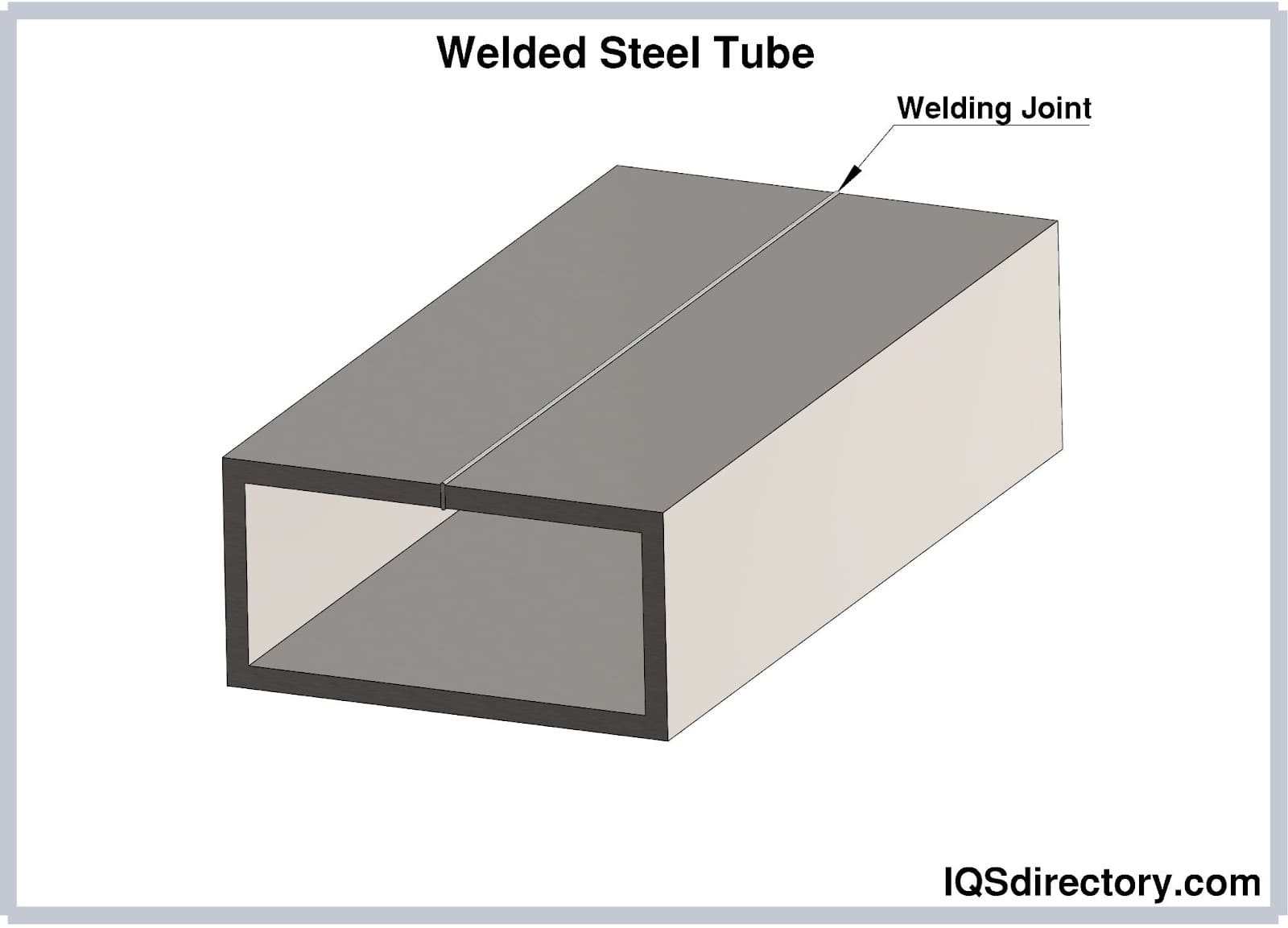
A seamless tube is a tube that has no welding seam. It can be made from carbon steel or stainless steel. It is manufactured by an extrusion process; a solid steel bar is pierced by pushing it over a plug, turning the bar into a tube. The bar is pushed multiple times to achieve the desired length and thickness. The welded area is a weak spot for the tubular structure. Without this area, the tube has higher strength and can withstand greater pressures and forces. The welded area is also prone to corrosion attacks. Therefore, seamless tubing has higher corrosion resistance.
Seamless tubing is ideal for applications demanding high safety standards. Seamless steel pipes are often employed in situations involving high temperatures and corrosive substances, as well as for transporting gases, steam, and vapors.

Steel plates are flat, thin steel materials with a minimum thickness of 6 mm, often measured in inches. They are produced through flat rolling and then subjected to various fabrication techniques such as cutting, rolling, press braking, and welding to form different products. Steel plates are employed in scenarios where strength and durability are essential, including in bridges, automotive components, support columns, pressure vessels, shipbuilding, and machinery parts.

Steel sheets are thinner than steel plates, with thicknesses ranging from 0.5 mm to 6 mm. Their thickness is usually indicated by gauge numbers, which correspond to specific measurements. A standard conversion chart can be used to translate gauge numbers into millimeters or inches. Steel sheets offer better formability compared to steel plates and can be processed through techniques such as deep drawing, perforation, corrugation, and slitting. They are typically used in applications where high strength is less critical, such as in food and pharmaceutical processing equipment, cookware, roofing materials, and tables.

Steel foils are the thinnest form of steel, with a thickness of less than 0.2 mm. They are produced by extensive hammering and rolling processes to achieve their very thin form. These foils are highly flexible and can be shaped into various products. Stainless steel foils are often used as backing material for stainless steel tapes, making them suitable for use in corrosive and challenging environments.

Steel beams are structural components designed to support substantial loads in buildings and other structures, providing stability against adverse weather conditions. They are generally constructed from carbon steel or high-strength steel and are produced through hot or cold rolling processes. Steel beams come in various types and can be manufactured in a range of thicknesses, widths, and sizes to suit different applications.
I-beams have a capital letter I-shaped cross-section. They are considered as the "universal beams." The horizontal components of the I-beam are called flanges. The flanges are connected by the vertical component called the web. I-beams are resistant to shear stress, bending, buckling, vibration, and tension if the appropriate size, thickness, stiffness, and mass are selected for a specific application.
S-beams, W-beams, and H-beams are variations of the I-beams.
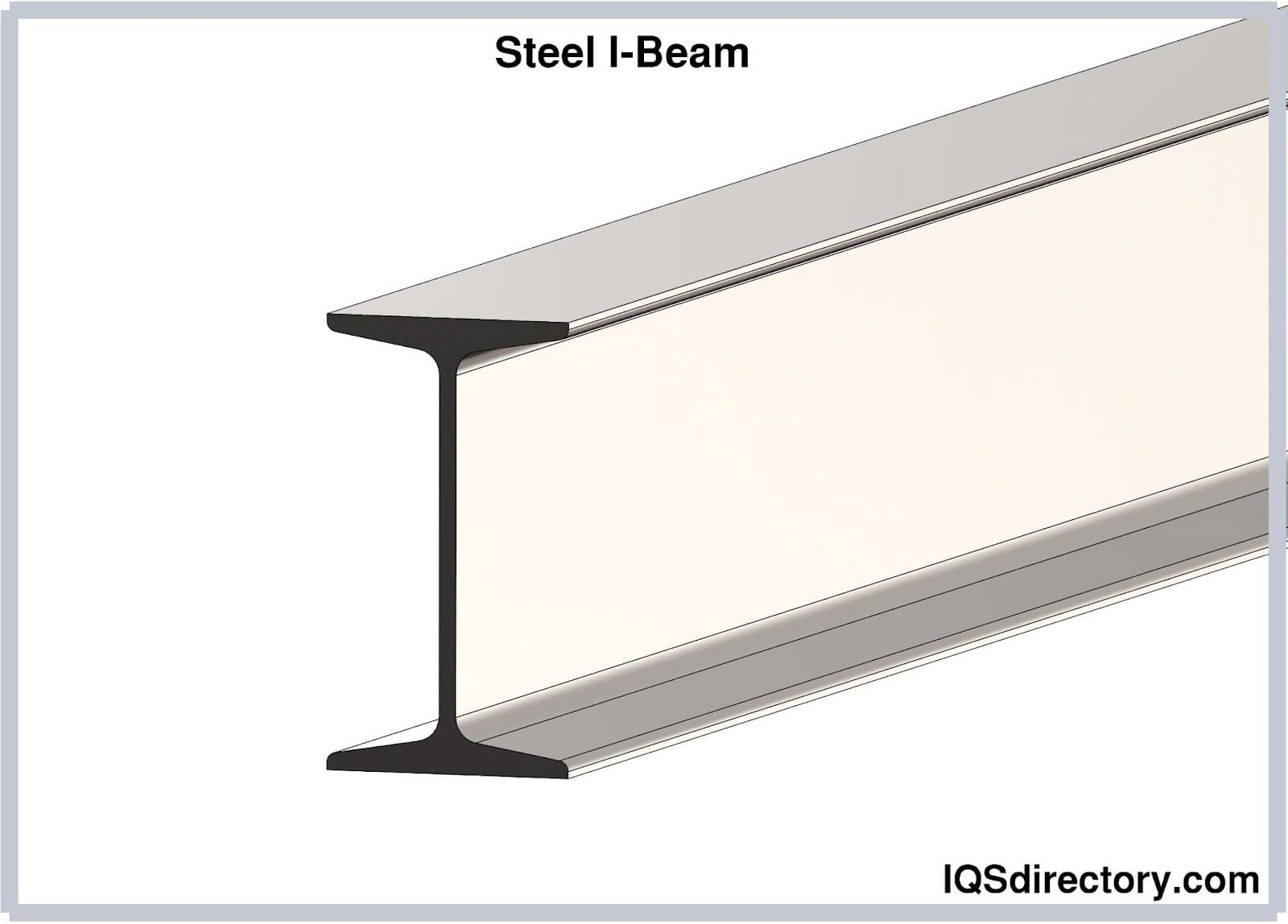
Plate girders are steel beams used in bridge construction where large transverse loads and spans are encountered. They are a type of I-beams that are distinguished by their wide and multiple webs. They are assembled by welding or bolting. Sections called stiffeners are added to the plate girder in order to transmit compressive or concentrated loads and prevent buckling.
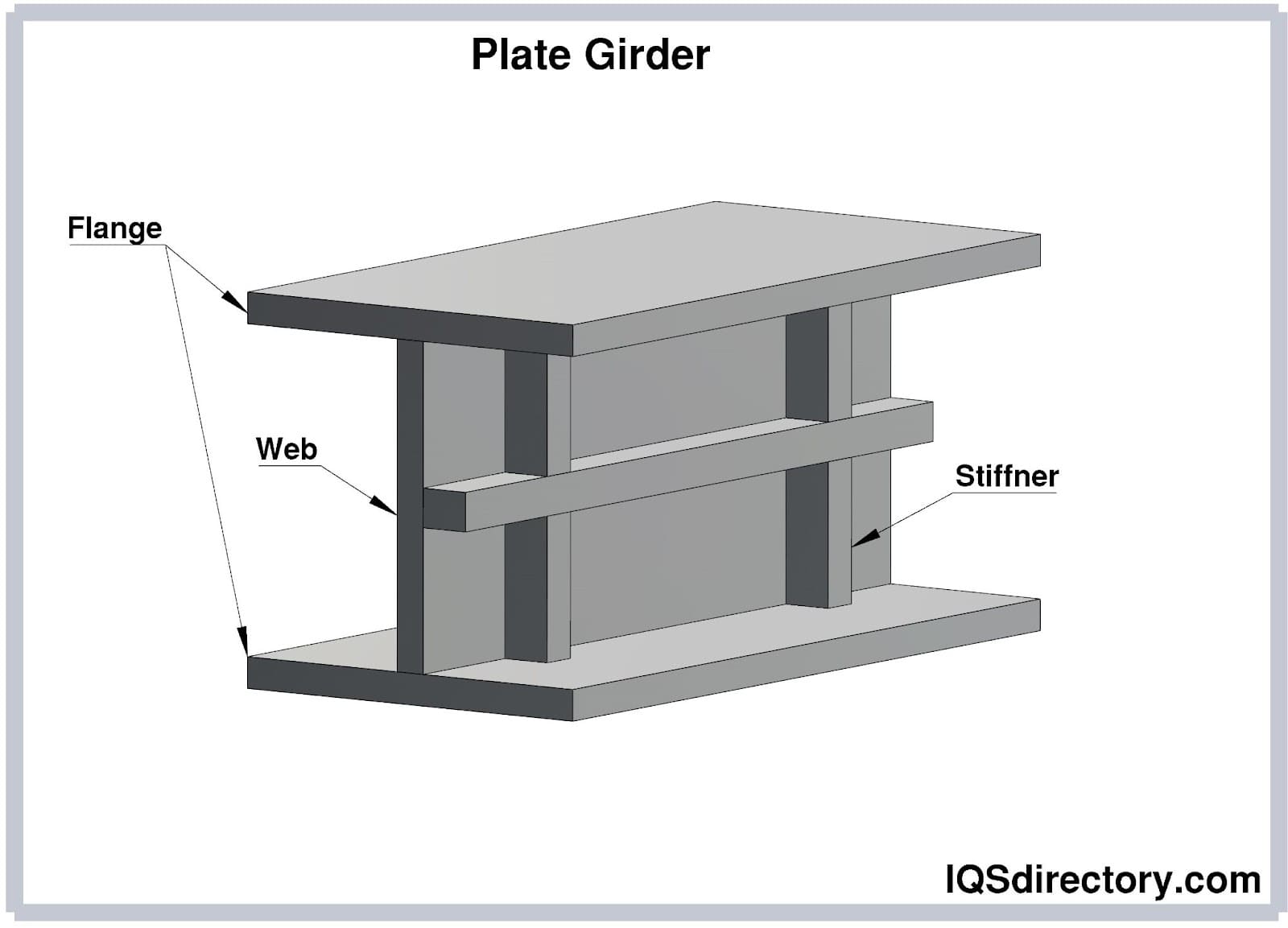
Steel wires are produced from low alloy carbon steel with a carbon content ranging from 0.4% to 0.95%. The manufacturing process involves wire drawing and rolling. Several strands of steel wire can be woven together to create steel mesh or twisted into ropes. Steel wires, ropes, and mesh offer high tensile strength and can endure significant forces while maintaining a relatively small diameter.


Aluminized steels are steels that have been hot-dip coated with pure aluminum or aluminum-silicon alloys. This hot-dip coating process is termed hot-dip aluminizing (HAD)...

Aluminum 1100 is the softest of the aluminum alloys, which makes it easy to shape and form into a wide range of products for industrial and home use. It can be cold and hot worked but is frequently shaped by...

The term "aluminum coil" describes aluminum that has been flattened into sheets where their width is significantly higher than their thickness and then "coiled" into a roll. Stacks of individual aluminum sheets are difficult to...

Aluminum piping and tubing is silvery-white, soft, and ductile. The metal belongs to the boron group. Aluminum is the third most abundant element present on earth. Aluminum has low density. When exposed...

Beryllium Copper is a versatile copper alloy that is valued for its high strength and hardness, combined with good electrical and thermal conductivity. It is a non-ferrous, non-magnetic, and non-sparking metal alloy...

A variety of copper-zinc alloys are referred to together as brass. Different ratios of brass and zinc can be used to create alloys, which produce materials with various mechanical, corrosion, and thermal properties...

Copper is a ductile, malleable, and reddish-gold metal with the capacity to effectively conduct heat and electricity. Brass and bronze, two commonly used alloys, are created when copper is combined with...

The copper sheet is a highly malleable and workable metal with outstanding electrical and thermal conductivity and corrosion resistance. Copper (Cu) is a reddish, very ductile metal that belongs to Group 11 of the periodic table...
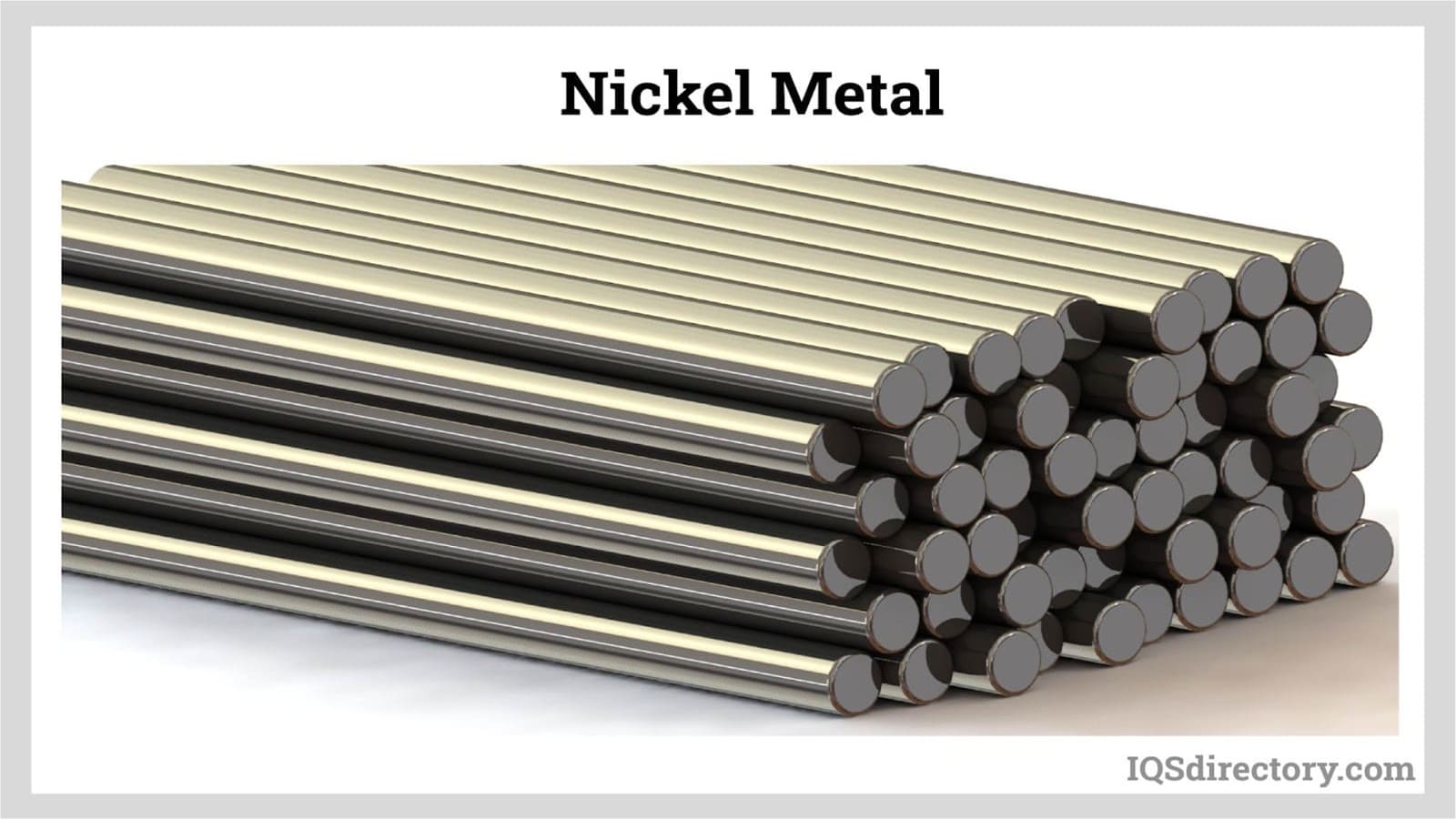
Metals are a group of substances that are malleable, ductile, and have high heat and electrical conductivity. They can be grouped into five categories with nickel falling in the category known as transition metals...
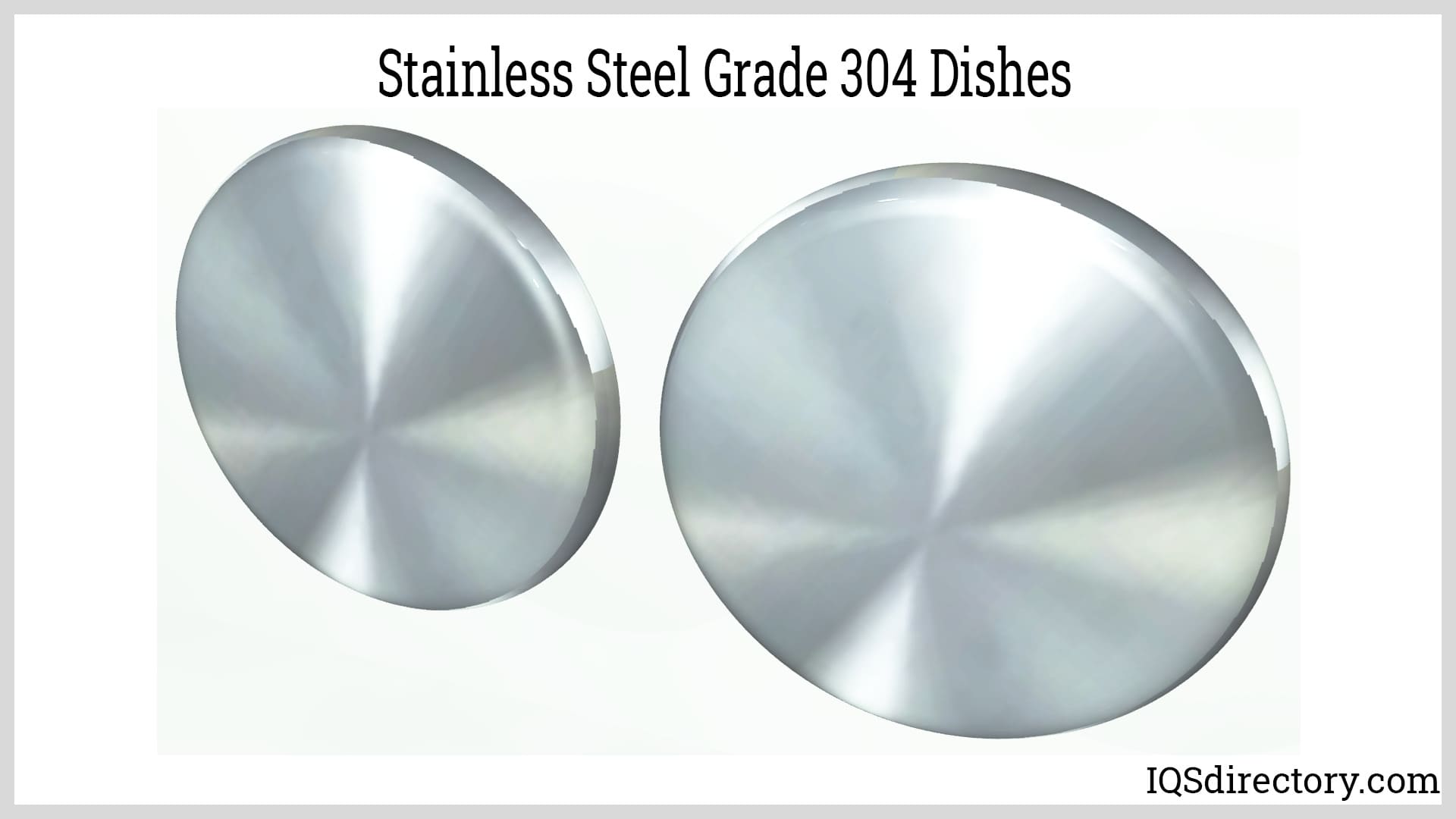
Stainless steel grade 304 is an austenite stainless steel that is the most widely used and versatile of the various grades of stainless steel. It is a part of the T300 series stainless steels with...

Stainless steel is a type of steel alloy containing a minimum of 10.5% chromium. Chromium imparts corrosion resistance to the metal. Corrosion resistance is achieved by creating a thin film of metal...

Stainless steel grades each consist of carbon, iron, 10.5%-30% chromium, nickel, molybdenum, and other alloying elements. It is a popular metal used in various products, tools, equipment, and structures that serve in many industrial, commercial, and domestic applications...

Stainless steel can be fabricated using any of the traditional forming and shaping methods. Austenitic stainless steel can be rolled, spun, deep drawn, cold forged, hot forged, or stippled using force and stress...

Stainless steel tubing is a multifaceted product that is commonly utilized in structural applications. Stainless steel tubing diameters and variations vary greatly based on the application requirements and are...

Titanium metal, with the symbol Ti, is the ninth most abundant element in the earth‘s crust. It does not occur in large deposits, yet small amounts of titanium are found in almost every rock...
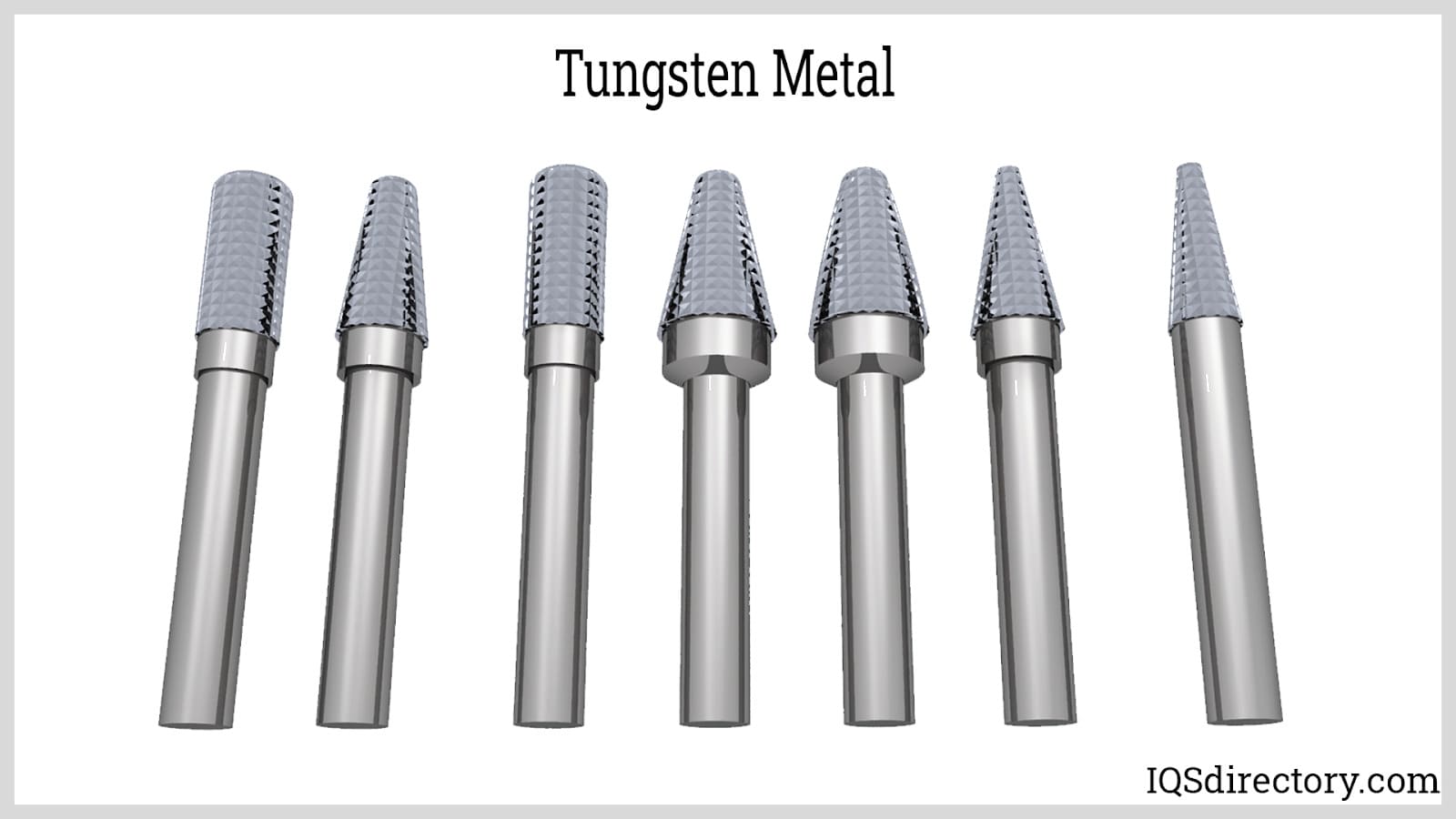
Tungsten is a rare naturally occurring chemical element on earth. It is known to be one of the toughest metals on the earth. It is usually a tin white or a steel gray metal. Tungsten is common for its high tensile...

Aluminum is the most abundant metal on the Earth’s crust, but it rarely exists as an elemental form. Aluminum and its alloys are valued because of their low density and high strength-to-weight ratio, durability, and corrosion resistance...